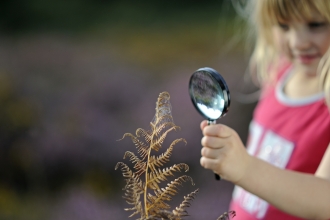Richard Burkmar / Pellucid hoverfly
Species of the Month: Pellucid hoverfly
Take part in our wildlife survey
Have you seen our Species of the Month in Dorset? By reporting your sighting below, you can help us to build up a picture of the state of Dorset’s wildlife. We send the records of your sighting to DERC (Dorset Environmental Records Centre) who collate this information, providing the opportunity for local naturalists, conservation organisations and wildlife enthusiasts to work together to protect wildlife in Dorset. What’s more, when you complete our Species of the Month survey, your sighting will display on our interactive map below. This allows us to visualize the range of wonderful wildlife our supporters have spotted in their gardens, on their balconies or in their local green spaces throughout the year! So please help us help wildlife by filling in the form below. Thank you!
Richard Burkmar / Pellucid hoverfly
Species of the Month: Pellucid hoverfly
Scientific name: Volucella pellucens
Layers
Identification
The pellucid hoverfly is 13-17 mm in length and has a wing length of about 10-15.5mm - about the size of a bumblebee. It has a broad, mostly black body with a broad, ivory-white band across the front part of the abdomen. The name ‘pellucid’ means translucently clear and if you catch this hoverfly in a certain light, you can see right through its middle. As with all hoverflies, the female’s eyes are spaced apart and the male’s eyes meet in the middle. The two wings are transparent, but the leading edge is amber, with large dark spots on each wing.
Diet
Adults feed on nectar and pollen, favouring white flowers such as elder, dogwood, bramble flowers and umbellifers.
The larvae eat waste products and larvae in the nests of the common wasp.
Behaviour
Despite the entrance to the nest being well guarded, the female pellucid hoverfly enters the nests of the common wasp and lays her eggs in their nests. The eggs hatch and fall to the bottom of the nest where they feed on debris including dead wasp grubs, the remains of food and other insects. The hosts do not seem to notice her presence, so it is thought that this relationship may be a symbiotic one as the larvae keep the nest clean.
When they are ready to pupate, the larvae leave the nest and pupate in the soil underground. The adult emerges around June and lives for about 35 days.
Did you know?
Hoverflies are the second most significant pollinator after bees. They are very important and useful inhabitants in the garden as they eat aphids, recycle waste and pollinate plants. Without them and other pollinators, our biodiversity would be much reduced, our food crops would be at risk, and our gardens less productive leaving less food for us and other wildlife.
The pellucid hoverfly is sometimes known as the great pied hoverfly or the pied plumehorn because of its black and white colour. It mimics the colouration of bees and wasps making it appear dangerous to predators.
Hoverflies are often misunderstood because they hover around people. They are attracted to the moisture and salts in the sweat as well as the heat from our bodies, but they are harmless and don’t bite or sting.
Hoverfly distribution has seen a 44% decline between 1980 to 2020 as a result of intensive agriculture, harmful pesticides, urban development and climate change. In 2022 the International Union for the Conservation of Nature added hoverflies to its Red List of threatened species.
Where can they be found?
They can be found in most parts of England, Wales and parts of Scotland.
They are found between May and October, with males often seen hovering several metres above the ground in woodland clearings, well wooded hedgerows, copses and gardens.
How can I help?
You can help by growing their favourite plants, providing nectar and pollen sources and by making a pollinator planter. Provide habitat for them such as shrubs, log piles and wild patches for their larvae. To find out more about hoverflies and how you can help them, become a hoverfly hero today.
Report your sighting
Help us build a more accurate picture of Dorset's wildlife by completing this form. Your records will be sent to DERC on the understanding that the information provided by the recorder will be entered onto a computerised database and may be used for nature conservation, research, education or be available to the general public. Your sighting will also appear on our Species of the Month map. You can change your communications preference at any time by contacting us on 01202 692033.
When you have completed the form, click the Submit button. Please note that once submitted it can take up to an hour for your sighting to populate the map.


